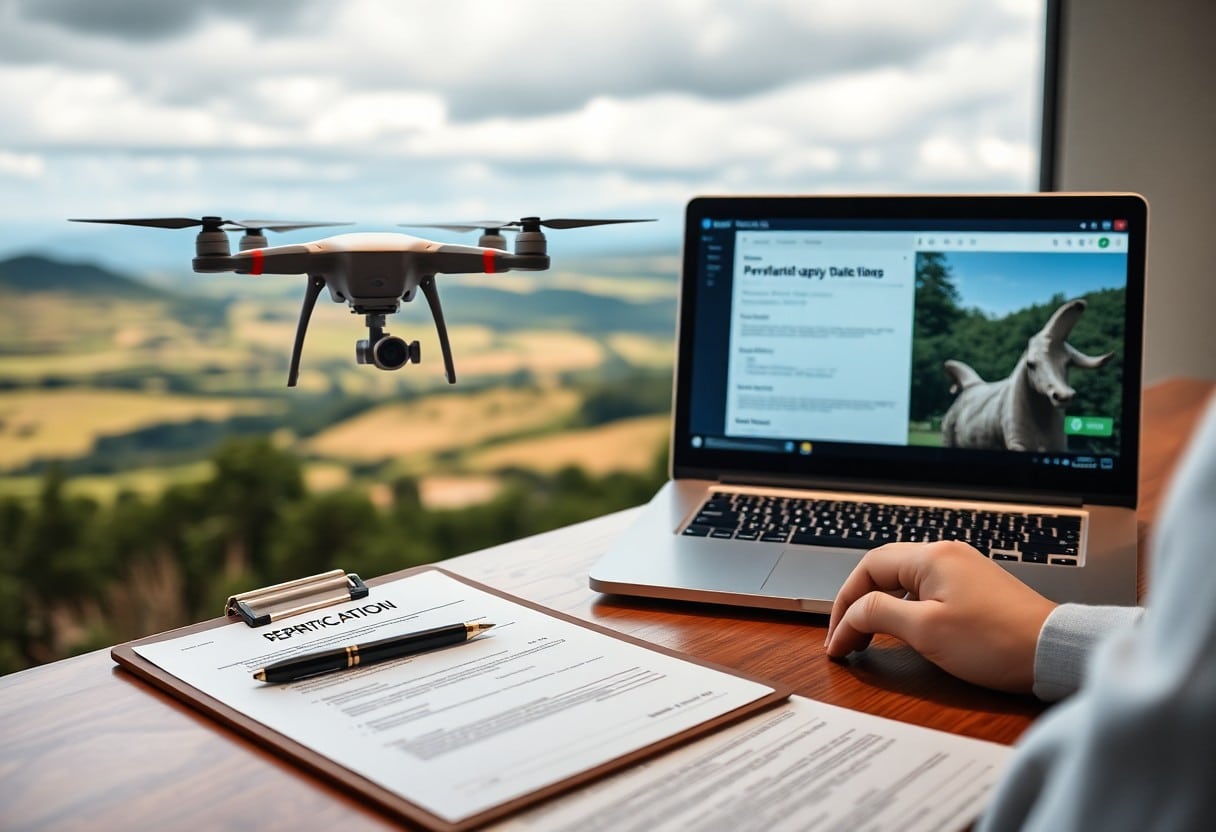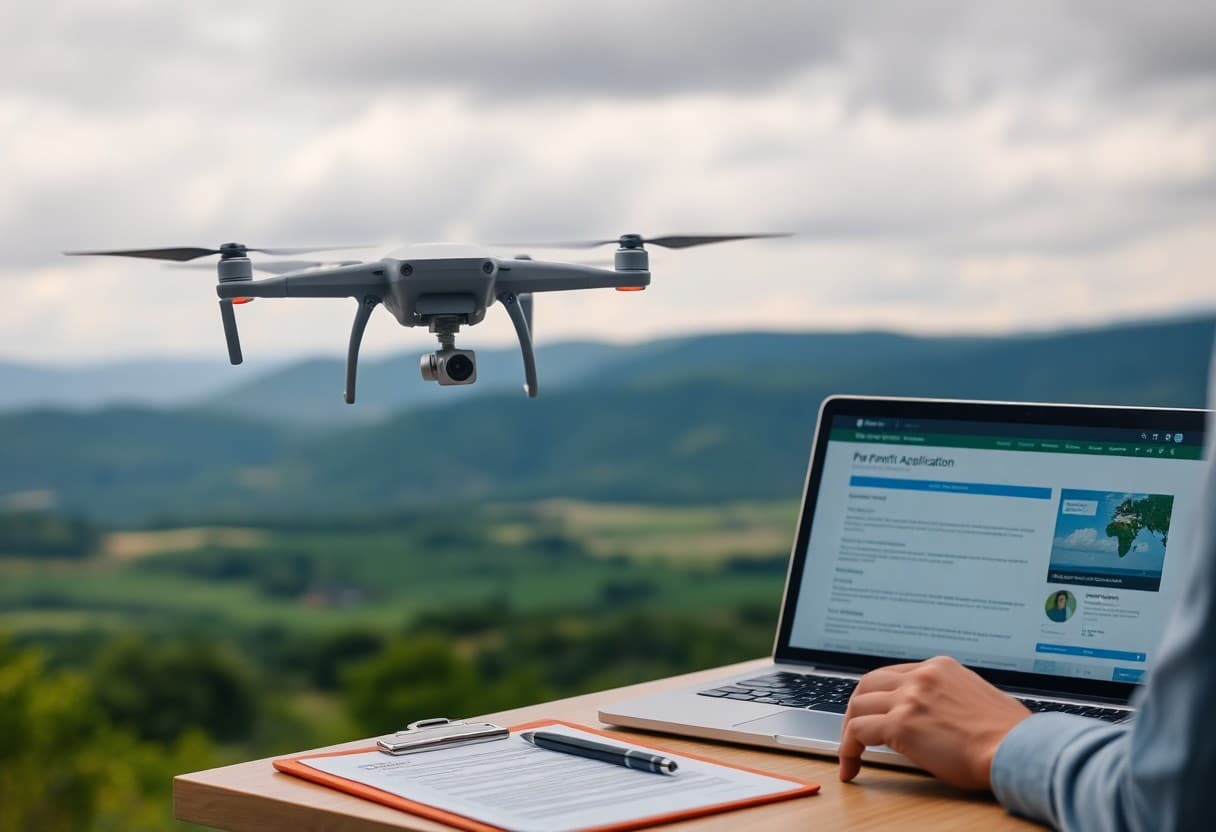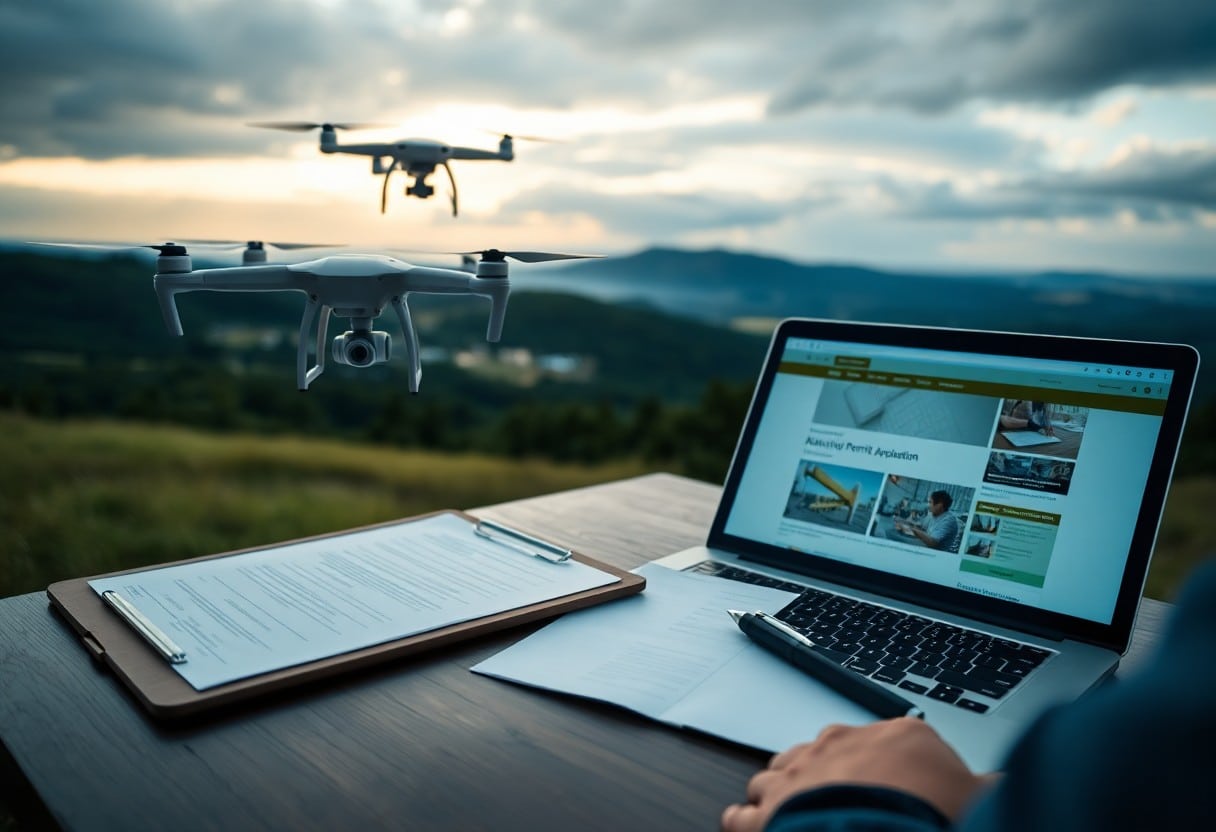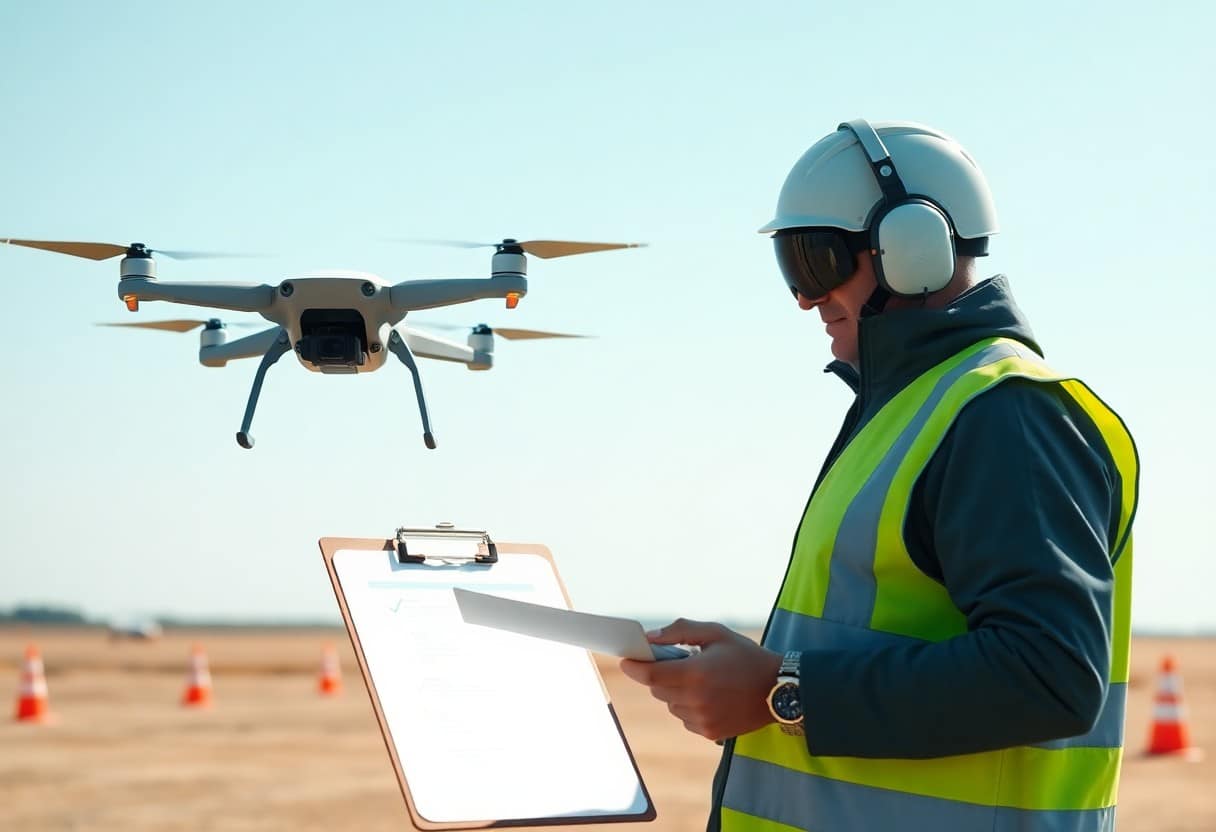What are the basic steps to apply for a drone license?
To be successful in applying for a drone permit, you need to know a few thingsNecessary StepsIn this article, we will provide you with a detailed overview of the key points to follow during the application process. In this article, we'll give you a detailed overview of the key points you must follow during the application process to help you ensure thatComplianceand avoid common pitfalls. With these tips, you'll be able toSuccessfully obtaining the licenseThis information is essential to make your drone flying activities safer and more legal. Whether you are a hobbyist or a professional operator, this information is important to you.

Key Points:
- Understand the requirements:Learn about drone rules and regulations in your country first.
- Select type:Determine the type of drone permit required and select the appropriate permit based on the use.
- Prepare the document:Prepare the required documents including identification, drone specifications, etc.
- Complete the application:Fill out and submit the drone permit application form, carefully checking the accuracy of the contents.
- Payment of fees:Pay the application fee according to the application requirements and keep the proof of payment.
- Training:Attend the necessary training on drone operation and obtain the relevant certificates.
- Awaiting approval:Wait patiently for the notification of approval after submitting your application and make sure to keep your contact details free.
Understanding Drone Regulations
Before applying for a drone permit, understand the relevantDrone RegulationsThese regulations are of paramount importance. These regulations often address details such as altitude, flight range, and required permits. Ensuring that you are familiar with local and federal regulations can help you operate your drone legally while minimizing potential legal risks.
Federal and State Regulations
The operation of the drone is limited byfederalrespond in singingState StatutesFederal regulations come primarily from the Federal Aviation Administration (FAA). While federal regulations come primarily from the Federal Aviation Administration (FAA), state regulations may vary from state to state and relate to specific flight restrictions and regional norms. Understanding these regulations can help you avoid unnecessary legal trouble.
Related Organizations
In the drone statute, there are severalImportant OrganizationsParticipation in regulatory work is mainlyFederal Aviation Administration (FAA)In addition, the agency is responsible for ensuring air safety and setting standards for the operation of unmanned aerial vehicles. In addition, local governments and state law departments are also involved in enforcing and improving drone regulations in their areas. Therefore, understanding the roles of these organizations can effectively help you comply with regulations.
The U.S. Federal Aviation Administration (FAA) is the key regulator of drone regulations, setting and updating drone operating standards and safety codes. Local governments, on the other hand, set specific restrictions based on their needs, which may include prohibiting flights over specific areas or events. Find out what this means for youOrganizationsand its regulations to help you use your drone to the fullest extent of the law and avoid fines or loss of your operating license.

Drone Permit Type
There are several types of drone permits, each of which addresses a different business need and flight purpose. The main types include:
| License Type | Description |
|---|---|
| Business License | Used for commercial drone operations. |
| Entertainment License | Flying drones for recreation. |
| Specialty Use Permit | For example, specialized machines for agriculture, film production, and so on. |
| Education License | For students or academic research. |
| Temporary Permit | A short-term permit for a specific project or activity. |
Understanding these categories will help you understand the requirements that need to be met in order to apply for a suitable license. For more information, you can refer toWhat basic drone controls should every new pilot be familiar with?The
Business License vs. Entertainment License
If you intend to use the drone for commercial activities, you will need to apply for theBusiness LicenseThis type of license is usually very demanding. This type of license is usually very demanding and involves expertise and safety responsibilities in drone operation. AndEntertainment LicenseThey are less stringent and usually do not have to face complicated regulatory requirements.
Specific Use Cases
Specific Use Cases are drone permits designed to meet specific needs for scenarios such as building inspections, agricultural monitoring, or movie filming.These permits usually require a detailed flight plan and safety measures.The
Whether you are in agriculture, construction or video production, you will need to provide the relevant information when applying for the permit.Detailed information on the purpose, location and potential risks of the flightThese TheseSpecific Purpose LicenseNot only does it help ensure operational safety, but it also maximizes the benefits of drone use. Mastering these elements will help increase the success of your permit application.
Prepare your application
When applying for a drone license, you will need to prepare your application materials carefully. Make sure you have all the necessary documents and consider any challenges you may encounter during the application process. Having a clear flight plan will help speed up the review process and increase your success rate. Remember, careful preparation will make your application more persuasive.
Documentation requirements
During the application process, you will be required to provide a variety ofRequired documentsMake sure that you have all the documents you need, such as proof of identity, proof of drone registration and proof of insurance. Ensure that all documents are complete and up-to-date to avoid delays due to incomplete information.
Flight Plan Development
Your flight plan is one of the most critical parts of the application. It should includetake-off and landing positionThe application will include an assessment of your flight range, scheduled flight time, and any possible risks. A detailed and specific plan will demonstrate your commitment to safety and compliance and increase the approval rate of your application.
You need to take airspace control into account when creating your flight plan,Meteorological conditionsThe following is a list of possible tasks to be carried out. Be sure to assess the potential hazards in your plan and develop emergency measures accordingly. In addition, you should consider the dynamics of other aircraft and follow local laws and regulations to ensure full compliance.

Submission Process
When applying for a drone license, you will need to follow a series of submission processes. First, make sure that all documents and references are in order, and then submit your application through the appropriate channels. It is recommended that you refer toHow to prepare for the drone authorization process?for detailed guidance to ensure your application is successful.
Online and Paper Applications
You can choose between online or paper applications. Online applications offer faster processing and a convenient submission process, while paper applications may require a longer processing time. Make sure you choose the right method for your needs to increase your chances of success.
Fees and Payment Methods
Applying for a drone permit usually involves paying a certain amount of money.Application Fee. You need to be aware of the current fee schedule and choose an appropriate payment method, such as credit card or electronic payment. These fees vary by region and type of application, so it's important that you do your homework in advance so that you have sufficient funds on hand.
As regards fees, they usually involveNon-refundable Application FeeThe author recommends checking the latest rate policy before submitting. These fees may be adjusted from time to time, so it is important to stay up-to-date. You can visit the official website or contact the applicant organization directly to get the specific amount and acceptable payment methods. Adjustmentspayment methodIt also improves the speed and efficiency of processing and avoids delaying your drone permit application due to payment issues.
Steps After Submission
After completing the submission of your drone permit application, there are a few important next steps that you need to be aware of. First of all, it is recommended that you check the status of your application on a regular basis in order to receive any updates and further information in a timely manner. You can refer toChange Your Lens - 8 Steps to Cinema Drone Photography Get more guidance and resources.
Track Application Status
After submitting your application, you can track the status of your application through the FAA's website. This not only helps you stay informed, but also allows you to take timely action. If there are delays or problems, knowing in advance will help you respond appropriately.
Responding to Supplemental Information Requests
If the FAA needs more information to review your application, they will send you a request. It is important that you provide the requested information in a timely and accurate manner. This step is important because any delays or incorrect responses may affect the progress of your application.
When responding to a request for additional information, you shouldCarefully examine the specific requirements listed in the request.and prepare the required information as soon as possible. KeepClear and professionalcommunication to ensure that the information you provide is complete and correct. If you are unsure of the information you need, you can reach out to the FAA for clarification. Emphasizing the importance of your compliance is critical to expediting your permit application process.
Common Challenges and Solutions
When making a drone permit application, you may face challenges such as insufficient or incomplete documentation. Preparing sufficient information and understanding the regulations are the keys to success. You can take a proactive approach, such as double-checking the requirements and seeking professional advice, to avoid small mistakes that could lead to delays or even denials.
Denials and Appeals
If your drone permit is denied, don't be discouraged. First of all, you should carefully understand the reasons for the rejection and prepare counter evidence based on the specific circumstances. You can submit an appeal with stronger reasons and evidence, which may increase your chances of approval.
Frequently Asked Questions
When applying for a drone permit, you may have many questions about the application process, such as how much it will cost, how long it will take to be approved, and what the compliance requirements are. Understanding these frequently asked questions will greatly reduce your anxiety during the application process and increase the efficiency of your application.
There are many frequently asked questions related to drone permit applications, and you can ask, for example, how long it takes to apply,How much does it cost?as well asWhat specific documents do you need to submitThe application process can be a very difficult one. Before you prepare your application, make sure you get answers from authoritative resources that can help you navigate the process and avoid potential problems and delays. Remember.The clearer you are about your needs and processes, the greater your chances of success.The
Basic Steps for Drone Permit Application
There are a few key steps you need to follow when applying for a drone permit. First, make sure your drone complies with local regulations and safety standards. Next, prepare the necessary documentation, including proof of identity and technical specifications of your drone. Then, fill out the application form and pay the relevant fees. Finally, keep an eye on the progress of your application and provide additional information as needed. Following these steps will help you successfully obtain the drone license you need.
Frequently Asked Questions
Q: What are the basic steps to apply for a drone license?
A: The basic steps in applying for a drone permit include: 1) Confirm that your drone complies with local laws and regulations; 2) Gather the necessary documents and information, such as proof of identity, drone model, and purpose; 3) Fill out the application form and pay the relevant fee; 4) Submit the application, usually online or in person; 5) Wait for review, which can take a few weeks; and 6) Receive notification of approval, which can lead to legal operation of the drone if the permit is granted. If you are authorized to operate the drone, you can legally operate the drone.
Q: What kind of documents do I need to provide to apply for a drone license?
A: When applying for a drone permit, the following documents are usually required: 1) identification document such as passport or pilot's license; 2) detailed technical specifications of the drone; 3) flight plan or statement of intended use; 4) proof of any necessary insurance; and 5) proof of previous experience in operating the drone (if applicable).
Q: What is the approximate cost of a drone license?
A: The cost of applying for a drone permit varies from country to country and usually ranges from a few tens to a few hundred dollars. In some cases, the type and use of the drone may affect the application fee, so it is recommended to check the specific local fee schedule before applying.
Q: How long does it take to apply for a drone license?
A: The time required to apply for a drone license varies depending on the region and the background of the applicant. Generally speaking, the vetting process can take anywhere from a few days to a few weeks, depending on the workload and efficiency of the local regulatory body.
Q: How can I confirm my application status during the application process?
A: You can check the status of your application through the official website of your local drone regulatory agency, which usually has an inquiry system. Some organizations also offer customer service by phone or email, so you can contact them directly for updates on the status of your application.
Q: What should I do if my drone permit is denied?
A: If a drone permit application is denied, the reasons for the denial are usually provided. You can revise these reasons and resubmit the application. In some cases, you may also choose to file an appeal, depending on local laws and regulations.
Q: Are there any specific types of drones that do not require a license?
A: In some countries and regions, small consumer drones (e.g. drones weighing less than a certain limit) may not require a license, but are still subject to local drone flight regulations. It is advisable to check local laws and regulations to ensure that you comply with all relevant requirements.




